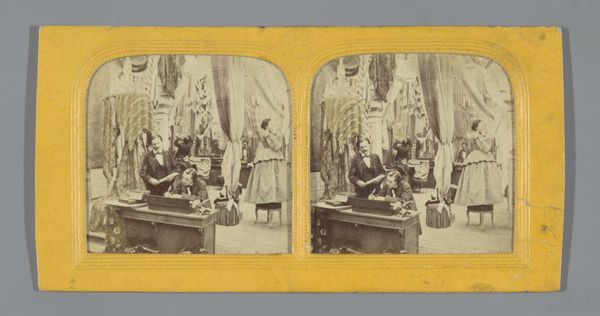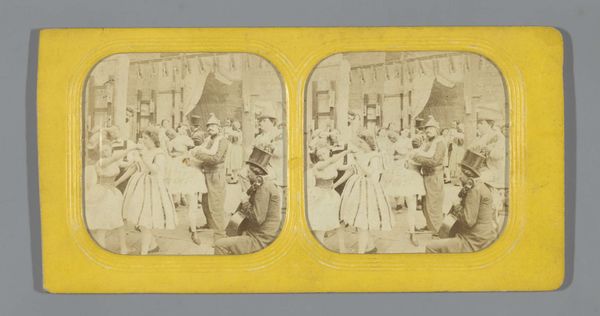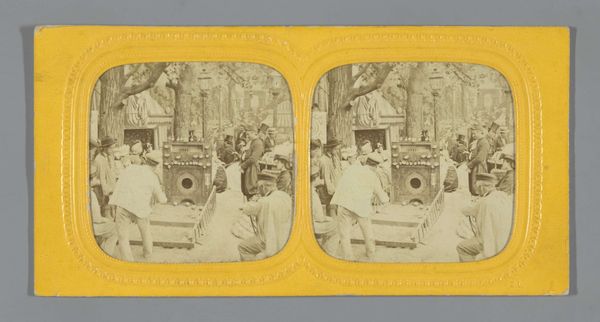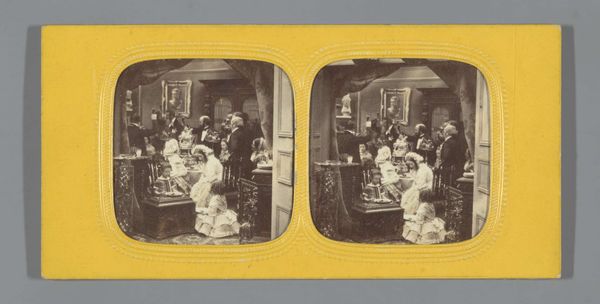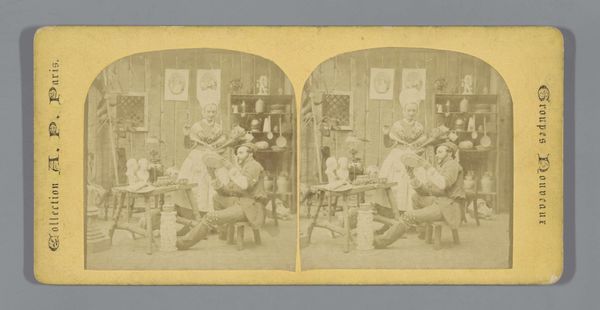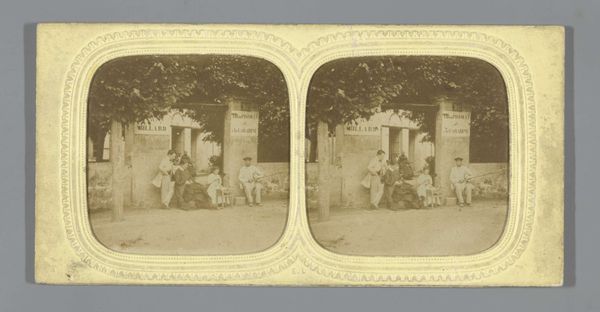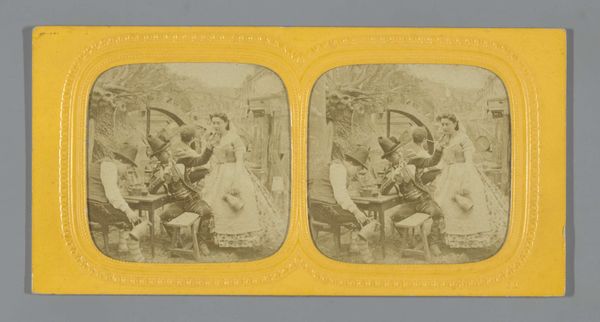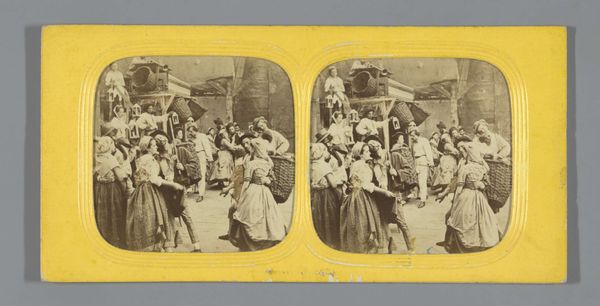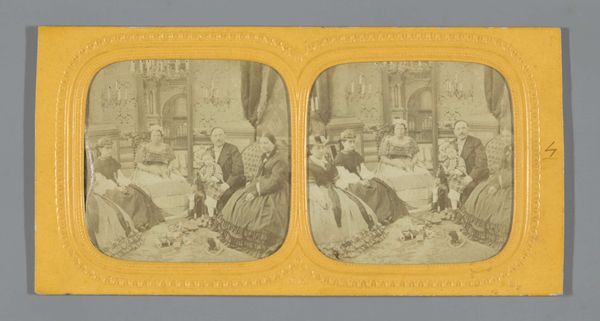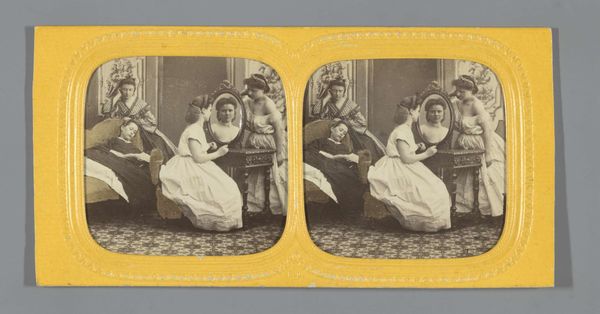
Dimensions: height 88 mm, width 173 mm
Copyright: Rijks Museum: Open Domain
Editor: Here we have an interesting albumen silver print, dating from between 1855 and 1872, titled "Tafereel in een salon, op de achtergrond uitzicht op bergen". It depicts what appears to be a group of people in a salon, with a painted mountain backdrop. The photograph's sepia tone lends it a slightly surreal air. What strikes you most about the construction of this scene? Curator: As a materialist, my focus shifts to the photographic process itself. Think about the labor involved in creating this image: preparing the glass plates, the precise timing of exposure, and the chemical development, all crucial to materialize this moment. Editor: That's a good point. I hadn’t considered the intense, almost artisanal process involved in creating an image back then. Curator: And what does this specific printing process communicate? Gelatin-silver prints offered greater sharpness and detail compared to earlier processes. The very materiality signals evolving techniques influencing how realism was perceived and consumed. It bridges industrial advance with aesthetics, raising questions about the economics of image production at this time. Was photography accessible or aimed at elite consumers? Editor: So, understanding the medium helps us contextualize its role in society at that moment. Do you think that the staged setting detracts from the photo's "realism," since it's clearly not a candid shot? Curator: It reframes what 'real' even meant. Photography aimed to capture truth but the settings, clothing, backdrop and poses point to crafted artifice, a social display as labor. How does this contrast with ideas around portraiture or even "genre painting"? Editor: That’s really helpful. Now I see that the setting itself, in contrast to what looks like hand painted background, it's not just decorative. It's part of how they were marketing this new technology and even constructing their identities. Thanks! Curator: Precisely. By examining the materials, processes and social contexts, we uncover deeper meaning and a more nuanced understanding of art history.
Comments
No comments
Be the first to comment and join the conversation on the ultimate creative platform.
